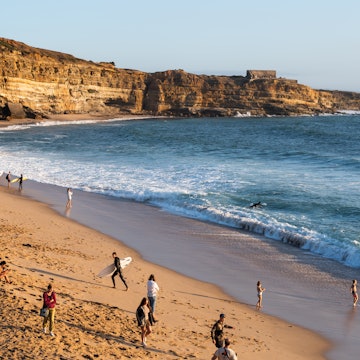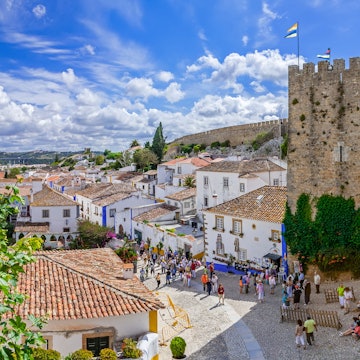
Why a slow bus journey is the best way to see the coast from Lisbon to Porto

Jul 20, 2023 • 7 min read

Taking the slow coastal route from Lisbon to Porto isn’t the fastest – but it’s far more interesting © Austin Bush / Lonely Planet
Our slow travel series explores how you can take more mindful journeys by train, boat, bus or bike – with tips on how to reach your no-fly destination, and what to see and do along the way. We asked Austin Bush to take the road less traveled route between Lisbon and Porto.
The typical route between Portugal’s two largest cities can be done by bus or train in around four hours. Yet these journeys are almost entirely inland, and they neglect that most important of Portuguese landscapes: the coast.
As the Atlantic Ocean almost seems to exist in the DNA of the Portuguese people, I wanted to travel between these cities in a way that made this element the centerpiece of the journey. So I followed a route between Lisbon and Porto that included overnight stays in three coastal towns. What I couldn’t have expected was that the trip would introduce me to three very different iterations of Portugal’s beautiful, diverse coastline.
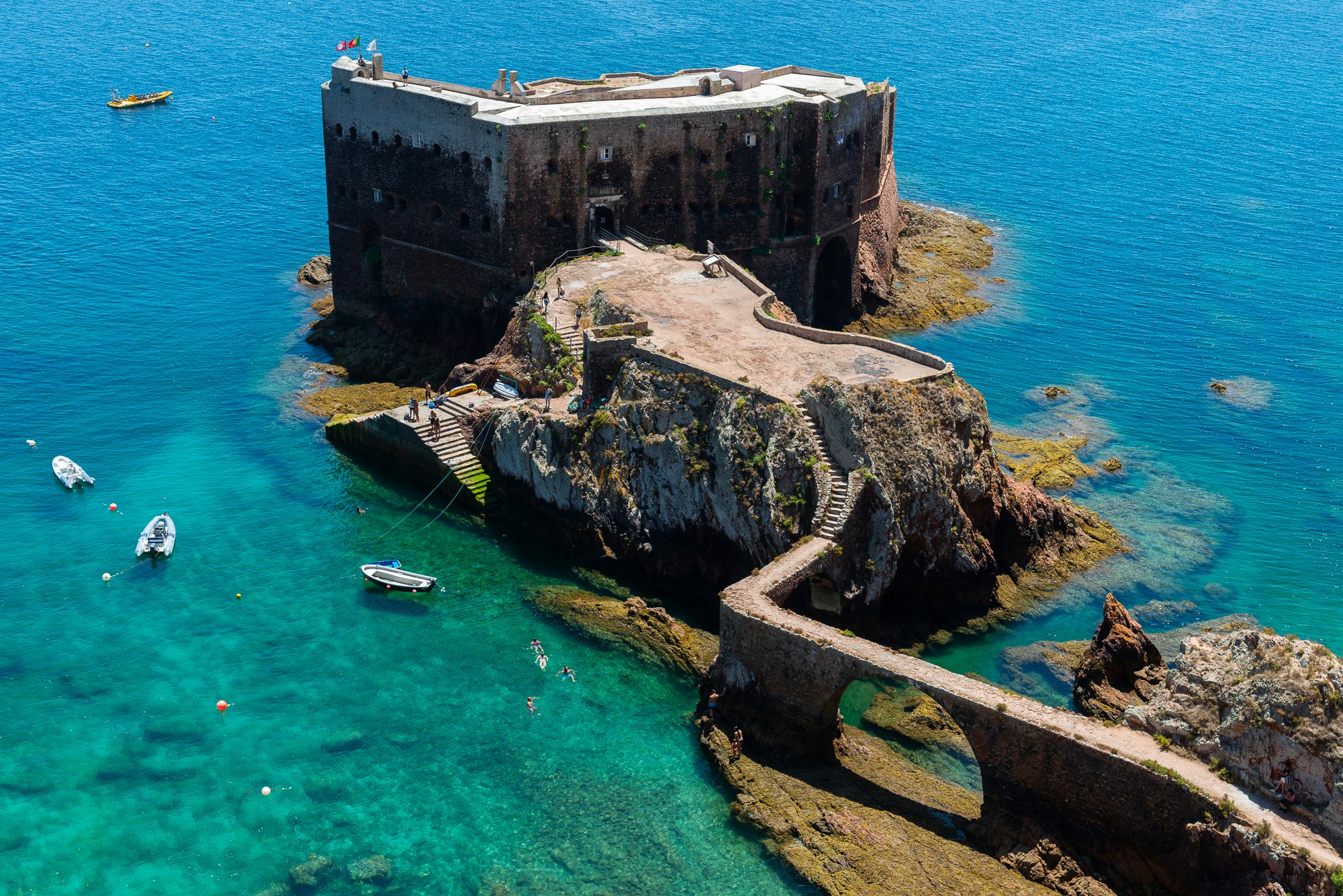
Lisbon to Peniche
My trip kicks off rather unceremoniously at Sete Rios bus station, just north of central Lisbon. I’ve booked a seat with Rede Expressos, a privately run bus service, for the hour-and-a-half ride to Peniche. The route is almost exclusively inland, with a brief crossing through Lisbon’s wine region. My first view of the Atlantic Ocean comes after ascending a hill in Lourinhã, just south of my destination.
Perched on an elevated, rocky peninsula jutting out into the Atlantic, Peniche has a historical center that’s dense and charming, fronted by the imposing Fortaleza de Peniche. Closed for renovations when we were in town, the fortress dates to the 16th century; during the 20th century, it was used as a prison for political prisoners during Portugal’s four decades-long dictatorship. When work is done, it will house a museum dedicated to the Portuguese who resisted fascism.
Eager to hit the coast, I leave my bags at the hotel and buy a ticket for a day trip to the Berlenga Islands. Located six miles off the coast of Peniche, the tiny archipelago has been attracting visitors since Phoenician times. Tickets for a variety of boats, fast and slow, are sold by several vendors at Peniche’s pier, and the trip takes at least 45 minutes. Visitors are relegated to Berlenga Grande, a dry and rocky island that’s home to a small beach and a variety of birds, as well as some easy, clear hiking trails. Backed by cliffs and fronted by azure waters, the walk to the 16th-century fortress is obligatory – it’s one of the most beautiful swimming holes I’ve ever been to. There’s an overpriced restaurant and snack bar at the pier, plus a bar at the fortress; a wiser move is to self-cater at Peniche’s excellent fresh market and bring a picnic with you to the island.

If you don’t have time to hit the islands, for another view of Peniche’s rugged coastline take a short taxi to Cruz dos Remédios. Located at the peninsula’s westernmost point, the shore here is a jagged, intimidating obstacle course of massive rocks, cliffs and sea foam. From this point, it’s possible to walk back to town on a path that hugs the southern coast of the peninsula, stopping in at mainland Europe’s westernmost chapel, a lighthouse, rocky fishing perches and viewpoints, and even a semi-urban beach.
Peniche is, not surprisingly, associated with high-quality seafood, and Portuguese day trippers and food writers alike are fans of Tasca do Joel. Pick your fresh fish from the counter, and don’t miss the encharcada, a traditional dessert with an almost comical amount of cinnamon.
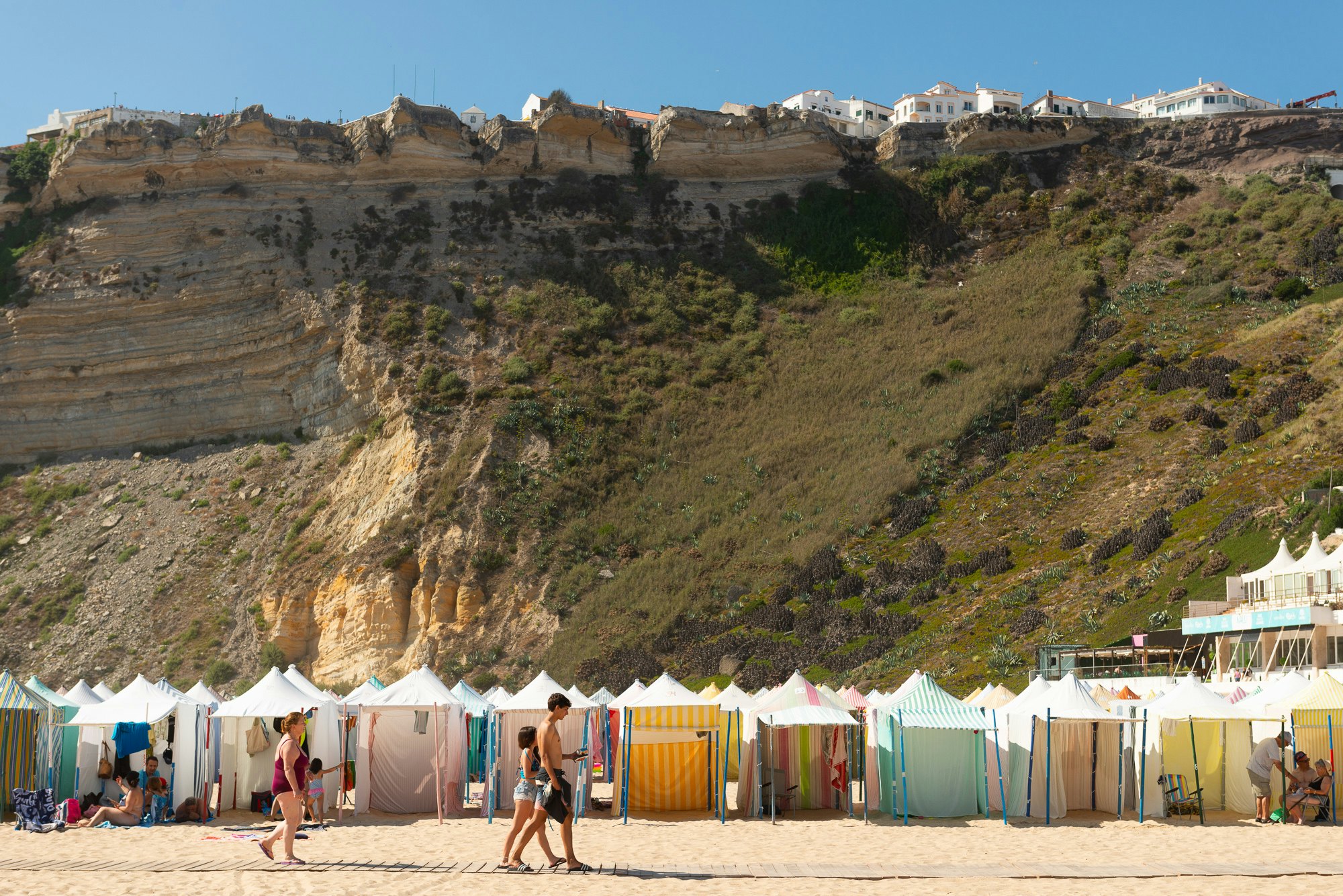
Peniche to Nazaré
The next afternoon, I board another Rede Expressos bus for the hour-long inland trip to Nazaré. If Peniche feels dense and rocky, Nazaré feels open and vast – with a wide, picture-postcard sandy beach backed by a steep cliff. With its tourists, hotels and ice cream parlors, Nazaré can also feel a bit like Coney Island. Though I’m sure there are no tile-fronted churches and crumbling mansions in Brooklyn.
The centerpiece of Nazaré is its mile-long beach, a destination for tens of thousands during the summer. At the beach’s middle point near colorful (now-grounded) fishing boats, a handful of aged vendors sun-dry and prepare various fish and seafood on racks positioned on the beach, selling them from stalls along the boardwalk. Head north from there; if it’s summer, you’ll find a virtual village of barracas, traditional wood-and-cotton sun bathing tents. Renting one for the day costs €10 and is a clever solution if (as I did) you have a long gap between hotel check-out and your bus departure.

Towering over Nazaré is the cliff-top community known as Sítio. Accessible via a tram are breathtaking views over town and some charming old buildings, including a century-old theater. Follow the descending path west and you’ll arrive at the farol, a lighthouse perched on rocks above a churning sea. It’s also the point where those surfing videos you’ve likely seen online were filmed: an undersea canyon just west of Nazaré creates massive waves.
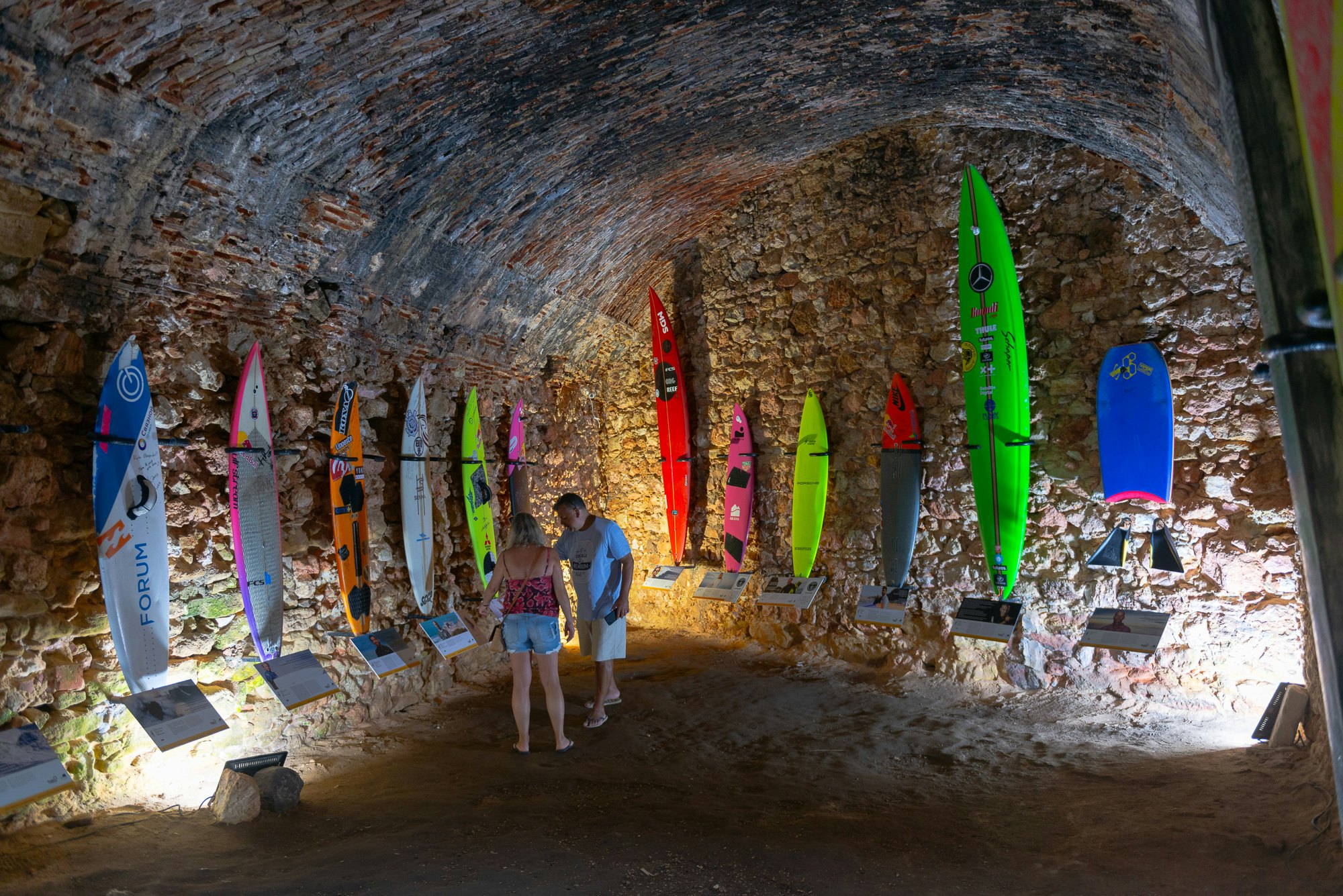
The town was put on the surfing map by American Garett McNamara, who in 2011 surfed a 78ft wave, at that time the largest to have been tackled. Today, the lighthouse functions as a museum of big-wave surfing, and the walls are lined with the boards of some of the sport’s legends. To return to Nazaré from Sítio, consider the footpath, which is where you’ll find a much-Instagrammed swing with a view over the city.
Back at sea level, skip the tourist traps and consider refueling at Cervejaria Galé. Chaotic, casual and cheap, it’s the epitome of a Portuguese-style, seafood-heavy beer hall – the kind of place where you can pair fancy items such as gooseneck barnacles or spider crab with tiny, cheap beers.

Nazaré to Aveiro
For my next leg, to Aveiro, FlixBus offered a friendlier departure time and price. The nearly two-hour trip is entirely inland and mostly featureless: perfect for a nap or podcast break.
My destination is positioned at the edge of a vast lagoon. During the 19th century, canals were dug to connect this body of water and the city, and today Aveiro is known as the “Venice of Portugal.” Colorful boats known as moliceiros that used to transport seaweed now carry tourists along these canals; a 45-minute ride costs from €13 and is a fun (if touristy) way to get oriented.
If you don’t want to do the tourist thing, simply walk or take one of Aveiro’s BUGA bikes west to Marinha da Troncalhada, at the edge of the lagoon, home to the closest of several salt flats in the area. Aveiro was once an important salt-producing area in Europe; salt is still created here by hand via a series of elevated flats. If you arrive in the morning, you’ll probably see people at work redistributing the salt with long rakes.

Back in town, Aveiro is a recognized repository of art nouveau architecture. Go deep on the topic at the Museu Arte Nova, or arrange an architecture-themed walking tour. Among Portuguese, the city is associated with oves moles (literally “soft eggs”), a dessert that takes the form of sweetened egg yolks in a pliable dough “shell.” Peixinho is allegedly the oldest place in town making them.
Pivot to the savory via a meal at O Augusto. Open since 1963 – and seemingly not having changed a single interior-design element since then – this warm, charming restaurant has a great reputation for its petiscos, Portuguese-style snacks. Think such items as a small plate of boiled shrimp or braised gizzards, or a tiny steak sandwich, which are typically combined with a drink.

Aveiro to Porto
From Aveiro, it’s less than 50 miles (75km) to Porto, a trip that can be done by bus or train. I did the former, which is inland; the latter allows fleeting glimpses of the coast around Espinho. Like Lisbon, Porto is located on a river just a few miles from where it pours into the ocean.
Yet another reminder that in Portugal, the sea is never far away.










